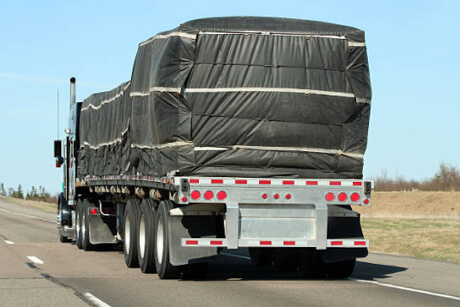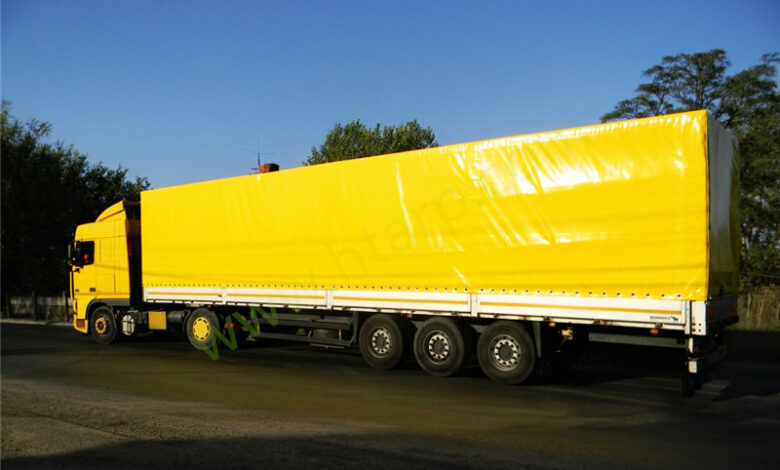Tarps News Categories
Tarping in trucking refers to the act of covering a load on a flatbed trailer with a tarp, which is a large, flexible piece of waterproof material. This is a common practice in the trucking industry to protect the load from the elements, such as rain, snow, and wind, while it is being transported.

There are several reasons why tarping is important in trucking. First, it helps to protect the load from damage. If the load is not covered, it can be exposed to the elements, which can cause it to become damaged or ruined. This can be a major problem, especially if the load is perishable goods, such as produce or dairy products, which can spoil if they get wet. In addition, tarping helps to protect the load from theft. If the load is visible, it may be tempting for thieves to try to steal it. By covering the load with a tarp, it becomes more difficult for thieves to see what is inside, which can help to deter them from attempting to steal the load.

There are several different types of tarps that can be used in trucking, including canvas, polyethylene, and vinyl. Canvas tarps are made from a heavy, durable fabric and are typically used for heavy-duty loads. Polyethylene tarps are made from a lightweight, waterproof plastic and are often used for lighter loads. Vinyl tarps are made from a strong, waterproof material and are resistant to UV radiation. They are often used for loads that need to be protected from the sun, such as construction materials or outdoor furniture.
Tarping a load can be a challenging task, especially if the load is large or awkward. It requires a certain level of skill and experience to properly cover a load with a tarp, as it must be done in a way that ensures that the tarp is secure and that the load is protected from the elements. There are several different methods that can be used to tarp a load, including the "bundle" method, the "diamond" method, and the "full tarp" method.
The "bundle" method is often used for smaller loads, such as pallets of goods or boxes. To tarp a load using the bundle method, the tarp is first draped over the top of the load, with the edges hanging down on either side. The edges are then secured to the sides of the trailer using tie-down straps, which help to hold the tarp in place. The corners of the tarp are then pulled over the top of the load and secured in place with more tie-down straps.
The "diamond" method is similar to the bundle method, but the tarp is draped over the top of the load in a diamond shape, with the corners hanging down on either side. The corners are then secured to the sides of the trailer using tie-down straps, and the edges of the tarp are pulled over the top of the load and secured in place.
The "full tarp" method is used for larger loads that require more coverage. To tarp a load using the full tarp method, the tarp is first draped over the top of the load, with the edges hanging down on either side. The corners of the tarp are then secured to the sides of the trailer using tie-down straps, and the edges are pulled over the top of the load and secured in place. The tarp is then secured to the front and rear of the trailer using additional tie-down straps, ensuring that the entire load is covered.
In conclusion, tarping is an important practice in the trucking industry, as it helps to protect the load from
you may also like
- PVC knife coating fabric raw material for truck cover
- Vinyl Coated Mesh Tarps
- PVC knife coating fabric - Membrane Orange
- Fire resistant heavy duty PVC mesh tarp
- 2M x 3.6M Clear Heavy Duty Waterproof Tarpaulin Sheet TARP Cover with Eyelets
- Flatbed Lumber Tarpaulin Steel Tarp
- 20 Mil Clear Heavy Duty Waterproof TARP Cover with Eyelets
- 20' X 27' Heavy Duty Flatbed Trailer Steel Tarp - 18 Oz. Red Tarp
- PVC knife coating fabric - Organ Tarpaulin
- 18 oz black Lightweight Heavy Duty 4 Feet Drop Lumber Tarp Steel Tarp For Flatbed Truck
others also viewed
- what would cause pvc tarpaulin to discolor
- Top 5 Best Tarps That Are Worth Your Money
- Flame retardant mechanism of pvc tarps
- Excellent PVC Materials for Tents and Shades
- Which Material is best for Tarpaulin?
- Ideal Winter Solution for Outdoor Courtyards: Clear Vinyl Tarps with Grommets
- Jumtarps company participated in the Mid-America Trucking Show 2025
- What is the GSM of PVC tarpaulin?
- Commonly used stabilizers for PVC Tarpaulin
- How to eliminate the static electricity of the pvc